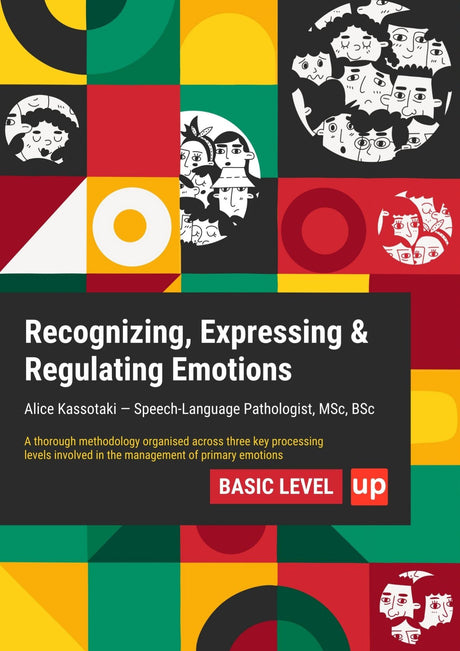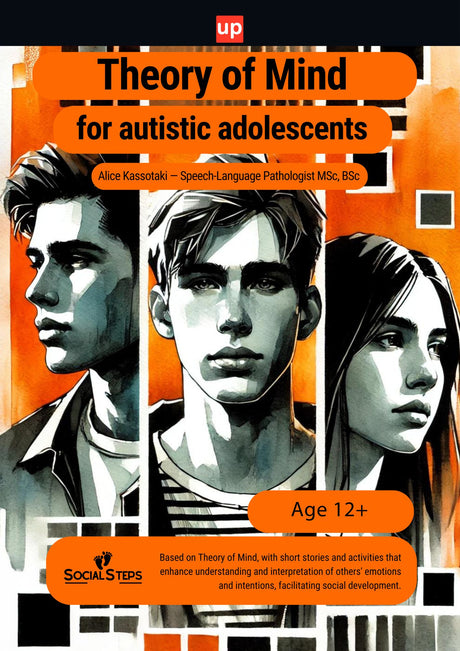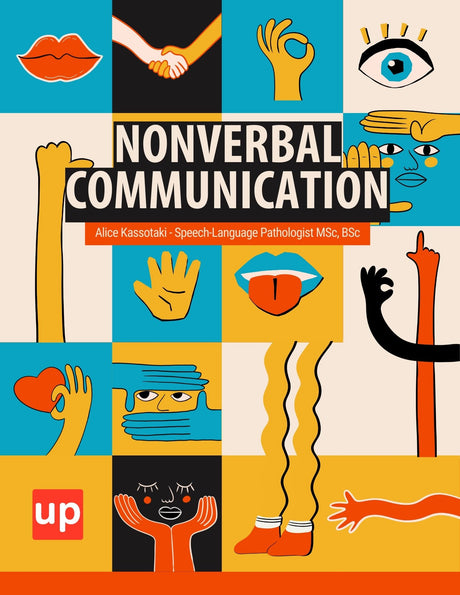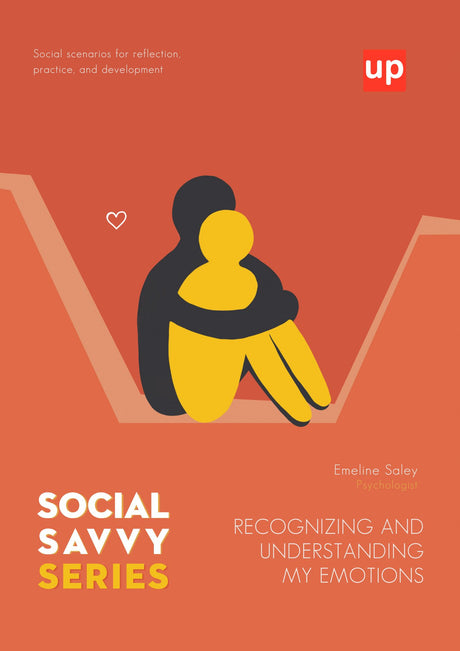In the realm of autism spectrum disorder (ASD), communication frequently presents as a complex challenge. However, what if strategic games could illuminate the intricacies of social interaction? In the pursuit of advancing social competencies, communication-focused games have emerged as formidable instruments, offering structured yet engaging means of participation. These games not only enhance comprehension and articulation but also bridge the gap from isolation to connectivity.
Key Takeaways
- Communication games for autism provide an engaging way to develop essential social skills, including turn-taking, emotional recognition, and effective verbal and nonverbal communication.
- Incorporating tools like the Picture Exchange Communication System (PECS), social stories, and role-playing games into daily routines fosters meaningful relationships and enhances functional communication in autistic children.
- Creating a supportive environment with visual aids, sensory play, and structured activities encourages self-expression, builds confidence, and promotes independence, contributing to improved mental health and everyday social interactions.
The Importance of Communication Games for Autism

Communication games are vital tools for enhancing the social skills of individuals with autism. By creating a supportive environment for interaction, these games facilitate the building of meaningful relationships through play. Turn-taking games, such as board and card games, are particularly effective in teaching patience and the ability to respond to others—essential elements of successful interaction.
Incorporating structured communication activities into everyday routines significantly bolsters communication skills. These activities promote social engagement and independence, enhancing the functional communication abilities of autistic children. Engaging in these games not only improves verbal communication but also helps children express emotions effectively, further developing their language skills.
By fostering social competence, communication games play a crucial role in reducing feelings of isolation among children with autism. This, in turn, contributes to improved mental health and overall personal development. Encouraging children to participate in these activities can lead to the formation of meaningful relationships and improved social interaction skills.
Here are some key benefits of communication games for autism:
- Enhances social skills
- Fosters meaningful relationships
- Improves mental health
- Promotes independence and functional communication
By employing these games, educators and caregivers can create a positive and engaging learning atmosphere for autistic students.
Picture Exchange Communication System (PECS) Activities
The Picture Exchange Communication System (PECS) is a powerful tool for enhancing communication skills in autistic children. It begins with simple pictures and progresses to more complex symbols, allowing children to effectively express their needs and desires. Studies show that standardized PECS training and regular use are critical for achieving communication improvements.
Consistency is crucial in PECS implementation, emphasizing the importance of clear protocols. Applied Behavior Analysis (ABA) therapy customizes PECS to suit each child's unique needs, increasing its effectiveness. This individualized approach helps foster independence and social engagement.
PECS can be integrated into a variety of communication activities, including:
- Role-playing games where children use images to navigate social scenarios.
- Joint attention exercises to practice engaging with peers.
- Turn-taking activities to improve social interaction skills.
Here is a snapshot of PECS benefits:
|
PECS Activity |
Benefits |
|---|---|
|
Role-playing games |
Enhances language skills and social tactics |
|
Joint attention exercises |
Encourages meaningful relationships |
|
Turn-taking activities |
Develops functional communication skills |
By incorporating PECS into everyday activities, we can support the development of communication skills, fostering meaningful relationships for autistic children.
Social Story Activities: Building Conversational Skills
Social story activities are an effective tool for helping children with autism understand and navigate social situations. These short, descriptive narratives are tailored to explain specific scenarios, reducing anxiety by illustrating expected behaviors.
Key Benefits:
- Understanding Social Interactions: Social stories highlight expected behaviors, making it easier for children to grasp the nuances of social interactions.
- Customized Learning: Parents and educators can tailor these stories to fit the unique needs of each child, enhancing their relevance and effectiveness.
- Emotional Recognition: By reading and discussing these stories, children learn to recognize and interpret emotions, preparing them for everyday social interactions.
Practical Applications:
- Reading Together: Share and discuss stories to help children learn from characters' actions and emotions.
- Role-Playing: Encourage children to role-play scenarios, like greeting others or taking turns, reinforcing the skills they've learned.
- Safe Practice: Allow children to safely practice and improve their conversational abilities in a supportive environment.
These activities are a cornerstone in developing communication skills, fostering meaningful relationships, and teaching students essential social skills.
Role-Playing Games: Fostering Imagination and Interaction

Role-playing games (RPGs) present an invaluable tool for children with autism to practice social scenarios in a structured setting. By simulating real-world interactions, these games help enhance communication skills and develop essential social abilities.
In a supportive environment, RPGs boost confidence by allowing children to engage with various social situations in a safe, controlled manner. This not only improves communication abilities but also fosters creativity and imagination.
Engaging in role-playing games encourages children to understand and apply social cues more effectively. These activities enable them to interact more meaningfully in daily life. Through role-playing, children can practice responses to everyday social interactions, which enhances language and verbal communication skills.
Here are some key benefits of role-playing games for autistic children:
- Enhance Communication: Encourages children to practice social interactions and communicate effectively.
- Develop Social Skills: Provides opportunities for joint attention and turn-taking in social stories.
- Build Confidence: Supports students in gaining assurance in their abilities to manage social cues.
Incorporating RPGs into education helps autistic students foster meaningful relationships, ultimately enhancing their overall social and emotional well-being.
Turn-Taking Activities: Learning Patience and Cooperation
Turn-taking activities are invaluable tools for children with autism, fostering patience and enhancing their social skills. These activities provide structured opportunities for practicing essential conversational exchanges like speaking and listening. Engaging in turn-taking helps children learn to wait patiently, which is crucial for developing effective communication.
Board games are excellent for promoting social skills, as they require players to engage in turn-taking and follow set rules. This structured interaction aids in reducing competition and encourages collaboration. When visual supports are included, the learning experience is further enhanced. They offer a structured and supportive framework for autistic children to develop social skills.
Regularly participating in turn-taking activities also helps autistic children understand conversational flow, a critical component of social communication. The benefits extend beyond playing games, as improved patience and cooperation skills help children navigate everyday social interactions more effectively.
Key Benefits of Turn-Taking Activities:
- Enhance Patience
- Encourage Collaboration
- Improve Conversational Flow
- Support Rule Adherence
These activities not only teach patience and cooperation but also lay the groundwork for building meaningful relationships and improving communication skills.
Emotion Recognition Games: Enhancing Emotional Understanding
Emotion recognition games play a crucial role in enhancing emotional intelligence for children with autism. By focusing on identifying and interpreting various emotions, these games aid in emotional regulation, which is vital for social competence. Improved understanding of emotional expressions helps autistic children navigate interpersonal interactions more effectively.
Engaging regularly with these games supports children in grasping social cues and emotional responses, bolstering their overall emotional awareness. The strategic implementation of emotion recognition games can lead to a more robust emotional understanding, allowing for more meaningful relationships and enhanced communication.
Benefits of Emotion Recognition Games:
- Identifies Emotions: Helps in recognizing different emotional expressions.
- Improves Social Skills: Facilitates better social competence and interaction.
- Enhances Emotional Regulation: Contributes to improved emotional control.
- Promotes Meaningful Relationships: Aids in navigating interpersonal dynamics.
These games, therefore, offer a supportive environment for fostering emotional intelligence and social skills, crucial for children with autism. By incorporating these activities into everyday learning, educators and caregivers can encourage children to express and manage emotions more effectively.
Sensory Play for Effective Communication
Sensory play is an essential tool in fostering effective communication for autistic children, especially those who are nonverbal. By stimulating one or more of the five senses—sight, hearing, smell, taste, and touch—sensory play acts as a motivator for engagement. Utilizing sensory bins or boxes filled with tactile, visual, and auditory stimuli, such as water toys or textured fabrics, helps develop sensory awareness.
Playdough is an excellent example of a sensory play activity that provides tactile stimulation. It encourages creativity and imaginative play, while also improving fine motor skills and hand-eye coordination. Bubbles, offering visual stimulation, can captivate children's attention, aiding in the development of speech and language skills.
Benefits of Sensory Play:
- Encourages verbal and nonverbal expression.
- Promotes engagement and interest.
- Develops fine motor skills and hand-eye coordination.
Engaging children in sensory play can help them overcome communication challenges by promoting both verbal and nonverbal expressions. Incorporating sensory activities into daily routines not only enhances communication skills but also contributes to building meaningful relationships and enhancing social interactions.
Interactive Storytelling: Engaging with Narrative

Interactive storytelling is a vital tool in supporting communication development for children with autism. Social stories, simple narratives designed to explain social situations and expected behaviors, play a significant role in nurturing these skills. Tailoring these stories to a child's personal experiences, such as "Going to the Park" or "Taking Turns in Conversation," can greatly enhance their comprehension and engagement with social interactions.
Incorporating visual aids like storyboards or visual cards further improves understanding and maintains engagement. By presenting characters and their actions, children learn to anticipate and mirror appropriate responses in real-life scenarios. This method not only prepares them for everyday social interactions but fosters meaningful relationships by encouraging empathy and emotional recognition.
To maximize effectiveness, consider following these steps:
- Choose Relevant Themes: Focus on situations familiar to the child.
- Incorporate Visual Aids: Use storyboards or visual cards to depict scenarios.
- Discuss Character Actions: Talk about feelings and behaviors.
- Encourage Practice: Role-play stories to enhance communication skills.
By integrating social stories into daily routines, autistic students can develop functional communication and improve their social skills. This approach not only supports verbal communication but also nurtures a supportive environment for children to express themselves confidently.
Digital Games: Technology as a Communication Ally
Digital games serve as a powerful ally in enhancing communication skills for autistic individuals. By integrating technology into playful environments, these games provide a unique platform to foster social interaction and improve communication abilities. Games that incorporate turn-taking, such as digital board games, teach patience and the importance of responding to others, crucial skills for autistic children.
Advantages of Digital Games for Autism:
- Encourage Interaction: Facilitates everyday social interactions in a controlled environment.
- Support Language Skills: Utilizes strategies like the Picture Exchange Communication System (PECS) to aid verbal communication.
- Enhance Emotional Recognition: Promotes the understanding of emotions and cooperation through engaging scenarios.
- Develop Functional Communication: Offers repeated practice, encouraging children to express themselves effectively.
These digital activities can be seamlessly integrated into daily routines, promoting not only social engagement but also independence. By leveraging video games and applications, autistic students have a supportive environment where they can practice essential social skills, develop meaningful relationships, and foster improved mental health.
In summary, communication games for autism, especially in digital formats, offer a dynamic and interactive way for autistic individuals to enhance their communication and social skills, making technology a vital ally in their developmental journey.
Visual Supports in Game-Based Learning
Visual supports can significantly enhance communication for children with autism by making interactions more tangible and structured. In game-based learning, these supports include visual schedules, communication boards, tactile symbols, photographs, and social stories. These aids not only help ease transitions between activities but also illustrate necessary social steps within the game, fostering a supportive environment for autistic children.
Types of Visual Supports:
- Visual schedules
- Communication boards
- Tactile symbols
- Photographs
- Social stories
Implementing visual supports involves setting clear goals, selecting suitable types of supports, and regularly reviewing their effectiveness. This structured approach allows children to better grasp social interactions, enhancing their communication skills. By incorporating these aids, games become valuable tools for developing social skills in children with autism.
Benefits of Visual Supports:
- Streamlines social interactions
- Reinforces understanding of social steps
- Creates a supportive environment
- Aids in easing activity transitions
Using visual supports in games not only encourages children to engage more effectively but also supports their overall development in social communication, fostering meaningful relationships and improved mental health.
Movement Activities: Bridging Physical and Social Engagement

Movement activities offer a unique bridge between physical activity and social engagement for nonverbal autistic children. These dynamic activities are not only useful for expelling excess energy but also enhance receptivity to other classroom tasks. Incorporating movement into the daily routine can significantly boost engagement and interaction in classroom settings.
Music-related movement, such as playing drums or tambourines, is particularly effective in fostering social interaction and communication skills. These activities not only stimulate auditory senses but also encourage joint attention and turn-taking—key elements in developing meaningful relationships and communication skills.
Engaging in movement activities contributes to the development of fine motor skills as well. Simple yet effective exercises such as building blocks, ball toss, and dance, enable children to improve coordination while enjoying play. More dynamic activities like trampoline exercises and obstacle courses further encourage children to engage physically while interacting with peers.
Below is a list of effective movement activities:
- Building blocks
- Ball toss
- Dance
- Trampoline
- Obstacle course
By seamlessly integrating these activities into a supportive environment, educators can foster improved social and language skills while enhancing functional communication. Movement activities effectively bridge physical and social engagement, making them an invaluable tool for supporting autistic students.
Creating a Supportive Environment for Game Play
Creating a supportive environment for game play is essential for fostering meaningful interactions and enhancing communication skills in autistic children. By tailoring communication games to individual needs, we can help set realistic expectations and integrate these activities seamlessly into daily routines.
Games can be powerful tools that offer autistic students opportunities to engage with peers, practice essential social skills, and improve verbal communication. Structured play, with games that have clear rules and limited wait times, ensures a positive experience while promoting confidence and encouraging social engagement.
To create this supportive environment, consider these key components:
- Visual Aids: Use pictures or symbols to illustrate game rules and steps, supporting children in understanding and participating.
- Sensory Play: Include sensory elements in games to cater to varying sensory preferences and keep students engaged.
- Role Playing Games: Foster joint attention and verbal communication through imaginative scenarios.
Implementing these strategies can help autistic children express themselves more confidently, improving both language skills and social interaction. Ultimately, this approach contributes to developing functional communication and fostering meaningful relationships, which are essential for mental health and everyday social interactions.
Conclusion
Communication games for autism are invaluable tools that support the development of essential social and communication skills in autistic children. By incorporating activities such as role-playing, turn-taking, and emotion recognition into everyday routines, caregivers and educators create a supportive environment that fosters meaningful relationships, builds confidence, and promotes independence. These games not only enhance verbal and nonverbal communication but also contribute to improved mental health and overall social development, making them an effective strategy for empowering autistic students in both classroom and everyday life.
Frequently Asked Questions (FAQ)
What are communication games for autism?
Communication games for autism are structured activities designed to improve social and communication skills in autistic children. These games focus on enhancing verbal and nonverbal communication, turn-taking, emotional recognition, and social interaction in a supportive environment.
How do communication games benefit children with autism?
These games help children develop essential social skills, foster meaningful relationships, improve mental health, and promote independence. By practicing communication in engaging and structured ways, children can better express themselves and navigate everyday social situations.
What is the Picture Exchange Communication System (PECS)?
PECS is a communication tool that uses picture symbols to help nonverbal or minimally verbal children express their needs and desires. It involves exchanging pictures to communicate and gradually supports the development of verbal communication.
Can role-playing games help autistic children?
Yes, role-playing games provide a safe and structured way for autistic children to practice social scenarios, improve communication skills, and build confidence in handling real-life interactions.
How can sensory play support communication development?
Sensory play stimulates the senses and encourages engagement, which can motivate verbal and nonverbal expression. It also helps develop fine motor skills and can reduce anxiety, making communication more accessible for autistic children.
Are digital games effective for enhancing communication skills?
Digital games can be effective by providing interactive and controlled environments that promote turn-taking, emotional recognition, and functional communication. They offer repeated practice opportunities and can be easily integrated into daily routines.
How can educators create a supportive environment for communication games?
Educators can use visual aids, sensory elements, clear rules, and structured activities tailored to individual needs. This approach helps autistic children understand expectations, participate confidently, and develop meaningful social and communication skills.
Original content from the Upbility writing team. Reproducing this article, in whole or in part, without credit to the publisher is prohibited.
References
-
Waterford.org. (n.d.). 24 Classroom Activities for Kids with Autism. Retrieved from https://www.waterford.org/blog/activities-for-children-with-autism
-
A Gem of Joy. (n.d.). 6 Functional Communication Activities for Autism. Retrieved from https://agemofjoyaba.com/autism-treatment-blog/6-functional-communication-activities-for-autism
-
Strive ABA Consultants. (n.d.). Games That Teach Social Skills to Children with Autism. Retrieved from https://striveabaconsultants.com/teach-social-skills-to-children-with-autism
-
Nobles Speech Therapy LLC. (n.d.). 10 Effective Speech Therapy Activities for Children with Autism. Retrieved from https://www.noblesspeechtherapy.com/speech-therapy-for-autism/10-effective-speech-therapy-activities-for-children-with-autism
-
Koala ABA & Learning Centers. (n.d.). Top 10 Autism Games and Social Skills Activities for Autistic Kids. Retrieved from https://koalaaba.com/autism/games-social-skills-activities-autistic-kids









